How K-FACTORY’s 3D machine-bent exhaust pipes are made! You’ve gotta have cool pipes!
This is the first in a series of articles in cooperation with K-FACTORY, a long-established parts manufacturer known for the development, manufacture, and sale of exhausts and billet parts. So, let's get right down to it. What is the most important factor to you when you customize your bike's exhaust? There are many different manufacturers, materials, colors, and layouts to choose from, but how about focusing on the beautiful curves of the exhaust pipes?
- To achieve a hand-bent look with machine bending!
- Machine-bending even more beautiful than hand-bending is achieved with this 3D bender
- Mounted on a jig and temporarily attached. The pipe is then polished.
- In-house production of exhaust parts such as merge collector and billet parts
- Glistening blue & gold appear when heat is applied
- The pioneer blue heat-colored exhaust! Now also available in gold!
To achieve a hand-bent look with machine bending!
K-FACTORY's titanium exhaust pipes gently curve from the engine to the merge collector. There are no straight lines or unnatural bends, and you can tell that the exhaust flow will be smooth just by looking at it. "I think the first thing that makes aftermarket exhaust systems cool is the beauty of the exhaust pipes. When I was young, I couldn't afford expensive hand-bent exhausts, so that might be the reason," says Mr. Kuwahara, the representative of K-FACTORY. It is true that hand-bending can create beautiful curves with good exhaust efficiency, although it is becoming less common these days. However, hand bending is quite literally a manual process, so it's costly, and the difference in skill level of the craftsman can affect the performance of the exhaust itself.
In contrast, machine bending, which has become mainstream in recent years, is a manufacturing method in which pipes are bent by a machine called a bender. However, the typical bender needs to have a straight line between bends, which inevitably results in a crooked shape. This can be seen in various exhaust pipes, including stock exhausts. However, machine bending has the advantage of mass production as well as uniform finish and performance. Therefore, K-FACTORY started their own development project around 1999 with the goal of taking advantage of the merits of machine bending while keeping the beauty of hand-bent curves. Naturally, they could not achieve the goal they had envisioned with a conventional bender, so a 3D bender was introduced. But it wasn't as simple as that.
As you can see in the series of photos below, the 3D bender is a machine that continuously bends a pipe while changing the speed and direction of pipe ejection. That's why there are no straight lines and beautiful curves can be made. However, at the time of development, bender manufacturers only had experience in bending steel pipes, and bending thin, hard titanium pipes was an extremely difficult task. "It took two years to fix the wrinkles and cracks, and get the correct circularity of the pipe. We had to dispose of tens of millions of yen worth of titanium pipes for testing and trials, but at the time, we were the largest producer of hand-bent titanium exhausts in Japan. We knew that even the same titanium material has different bending characteristics, and this know-how was put to good use," says Kuwahara.
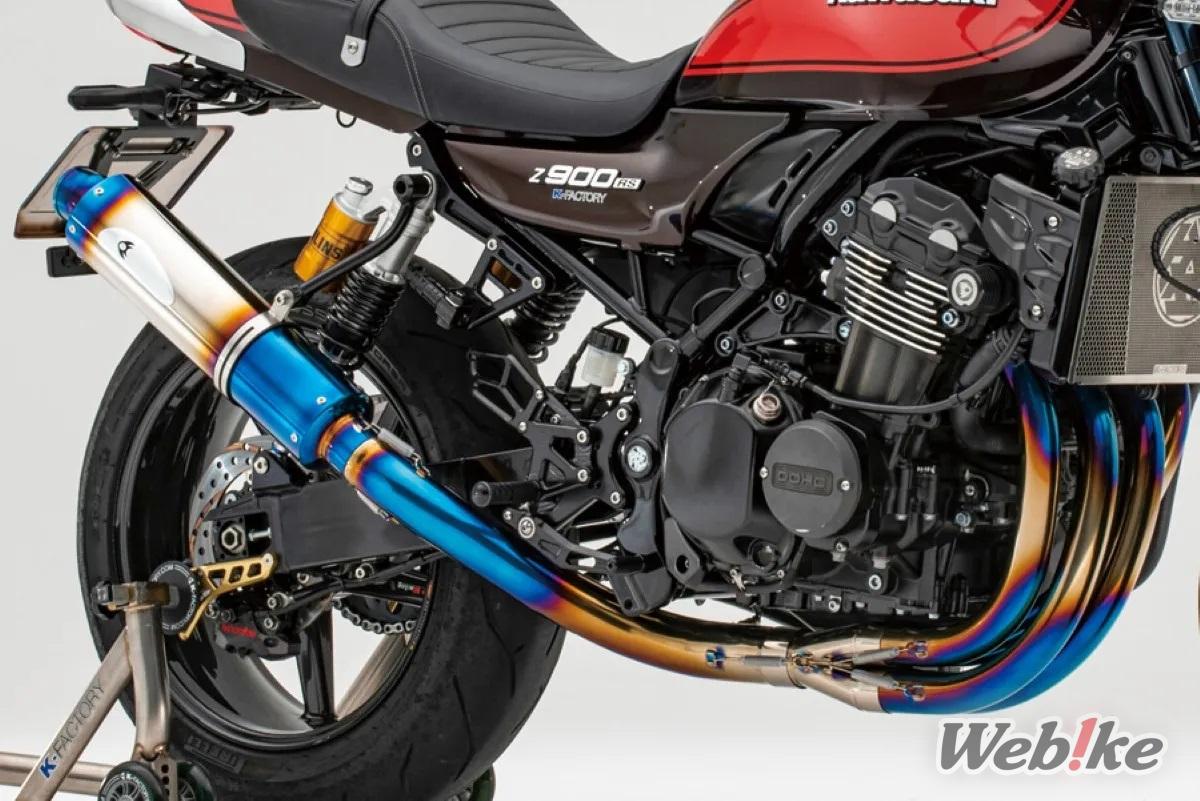
Using this 3D bender, K-FACTORY was the first in the industry to release an exhaust with a blue heat-color on buffed titanium pipes. They created this blue color on not only the exhaust pipes, but also the tail pipe and silencer, and these full exhaust systems were a big hit. Now, heat-colored gold is also available. These exhausts continue to attract a following with their unparalleled sense of luxury.
Machine-bending even more beautiful than hand-bending is achieved with this 3D bender

Mounted on a jig and temporarily attached. The pipe is then polished.
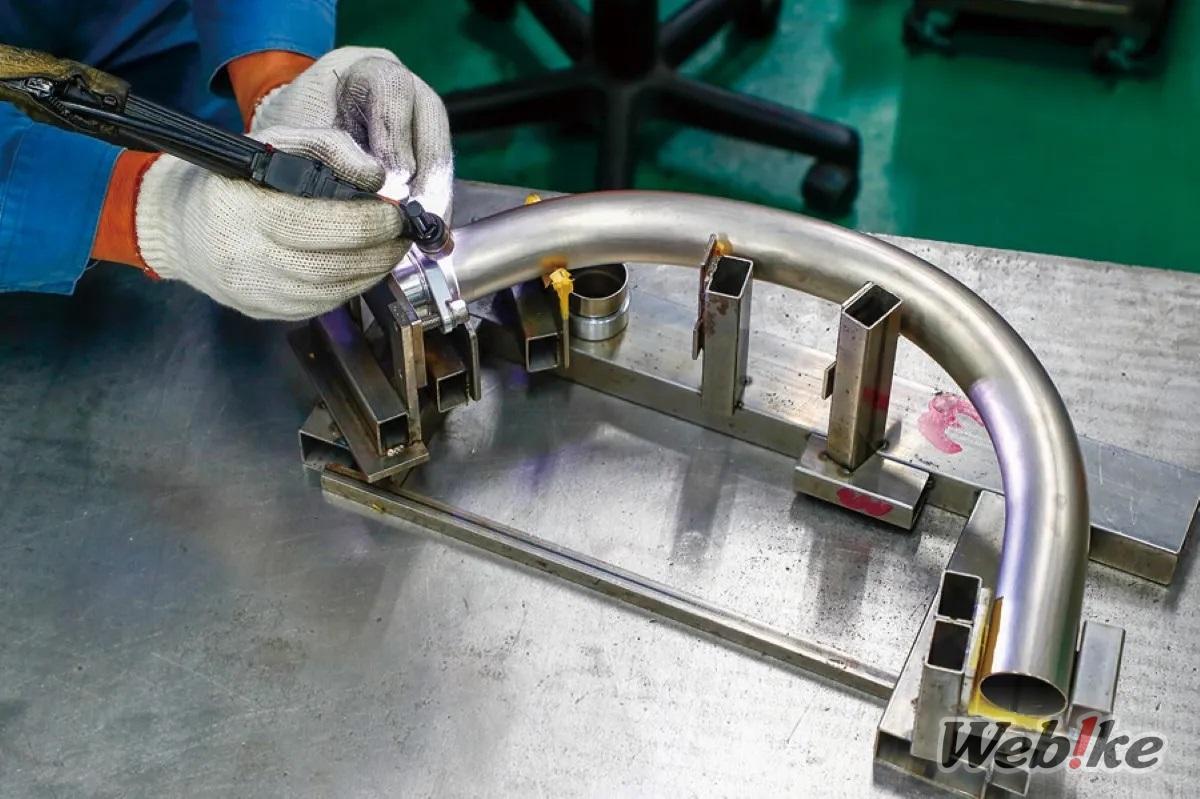
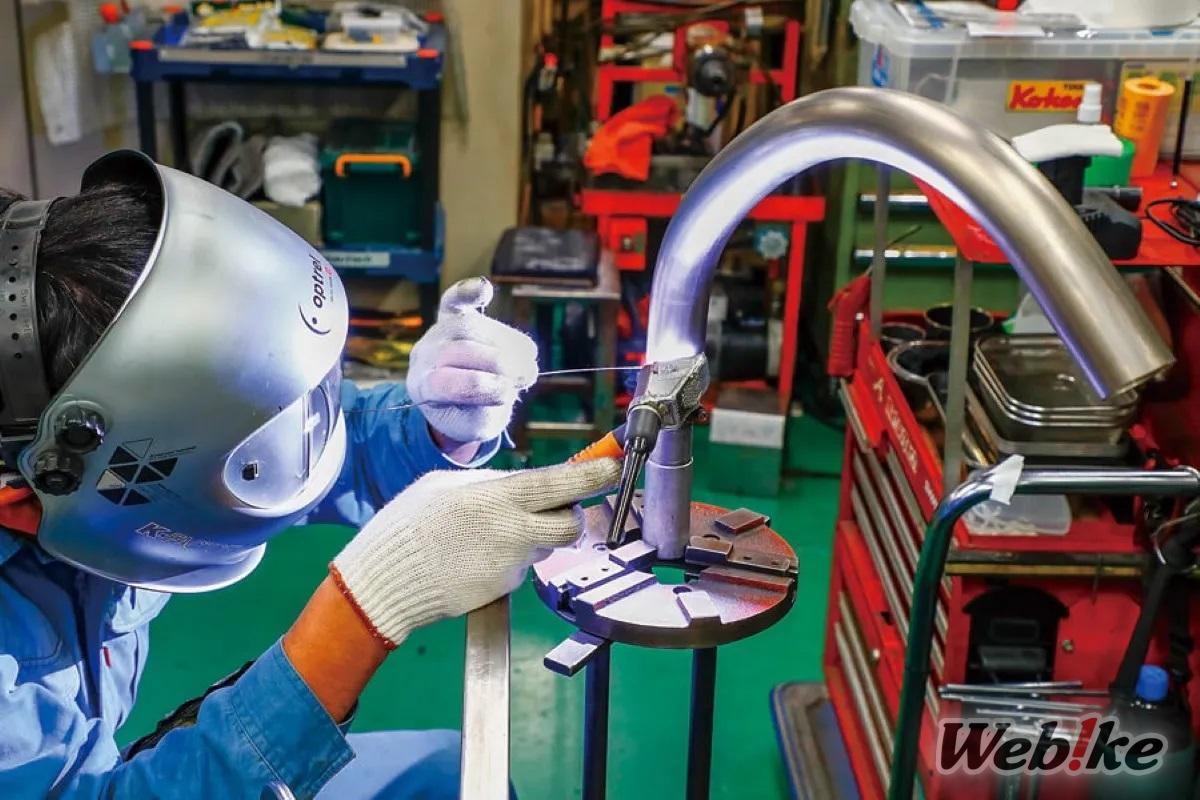
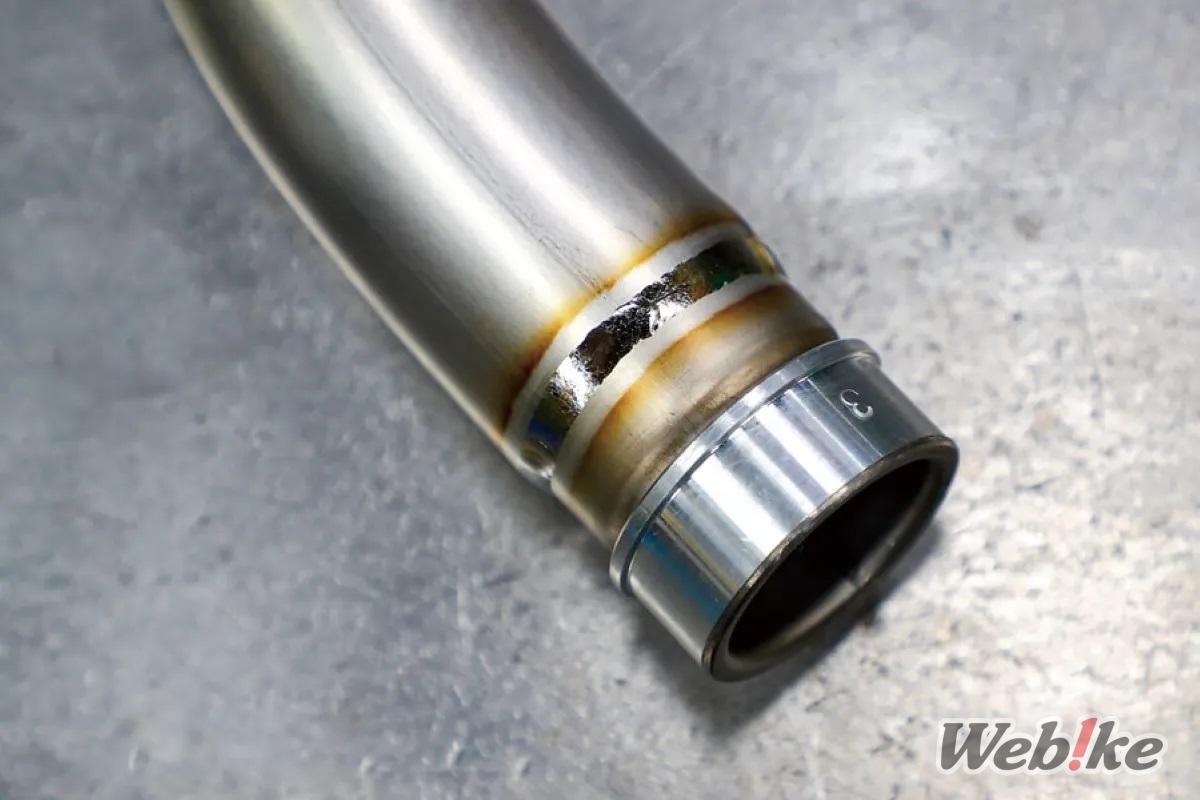
In-house production of exhaust parts such as merge collector and billet parts
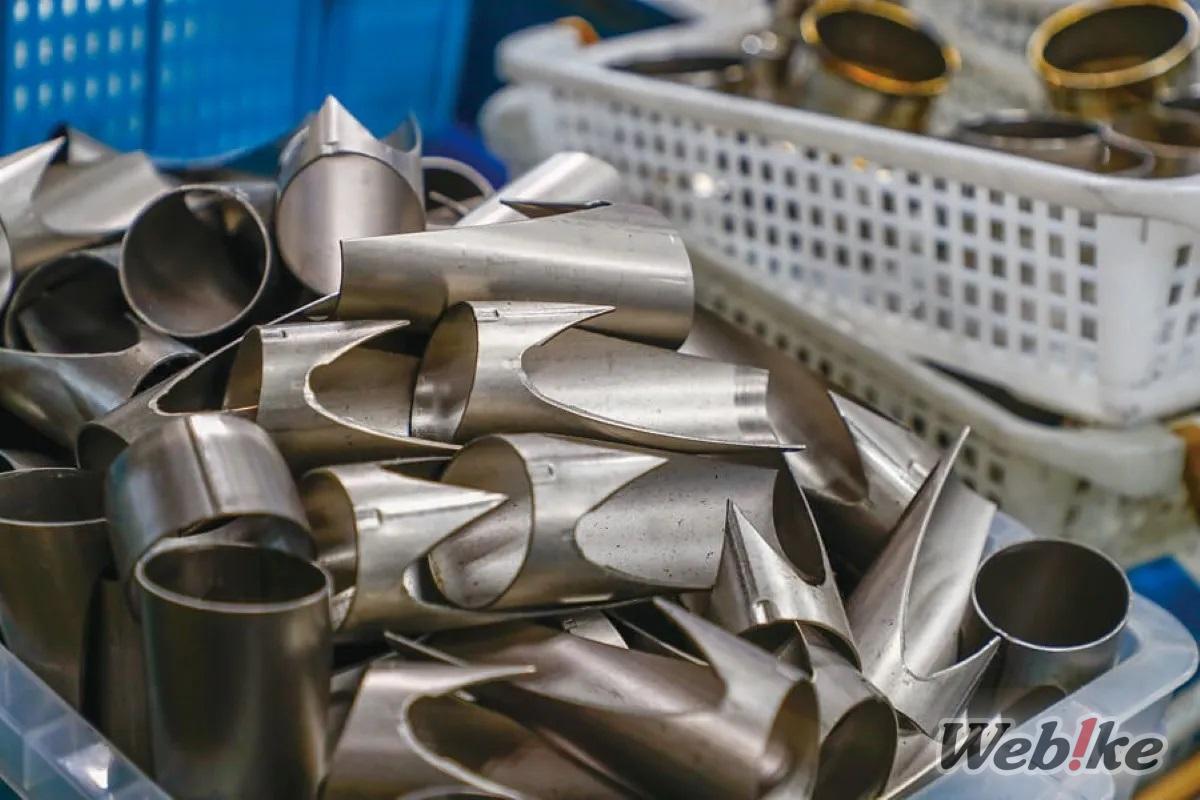
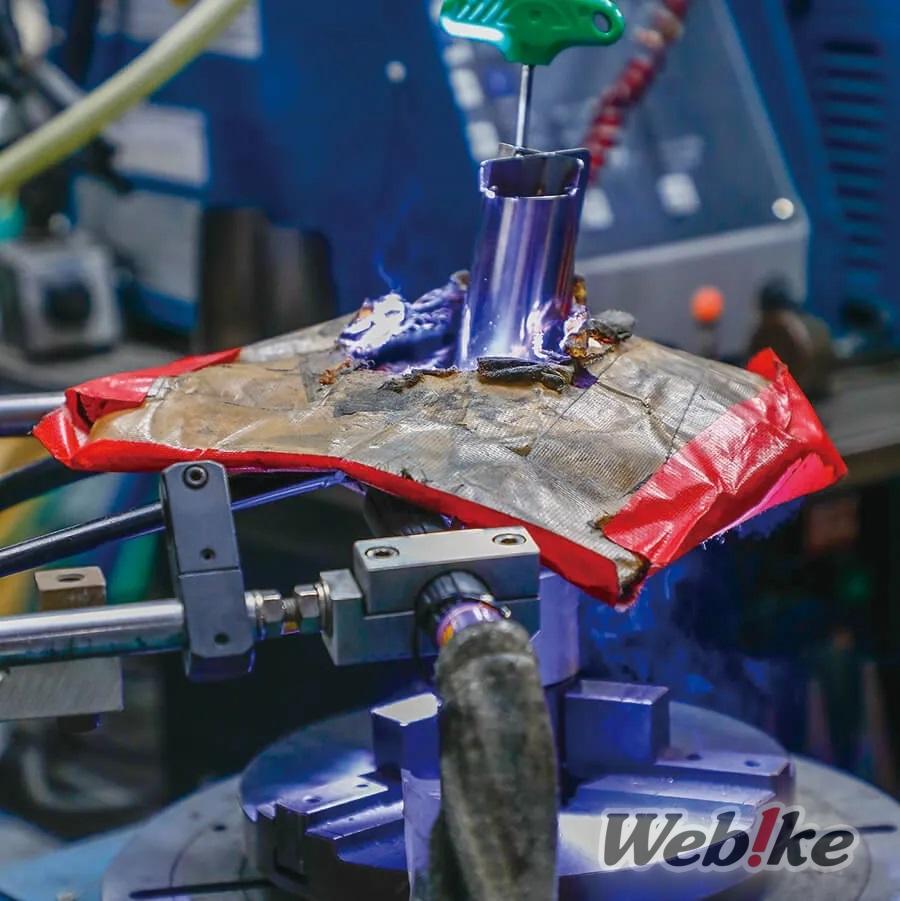
Glistening blue & gold appear when heat is applied
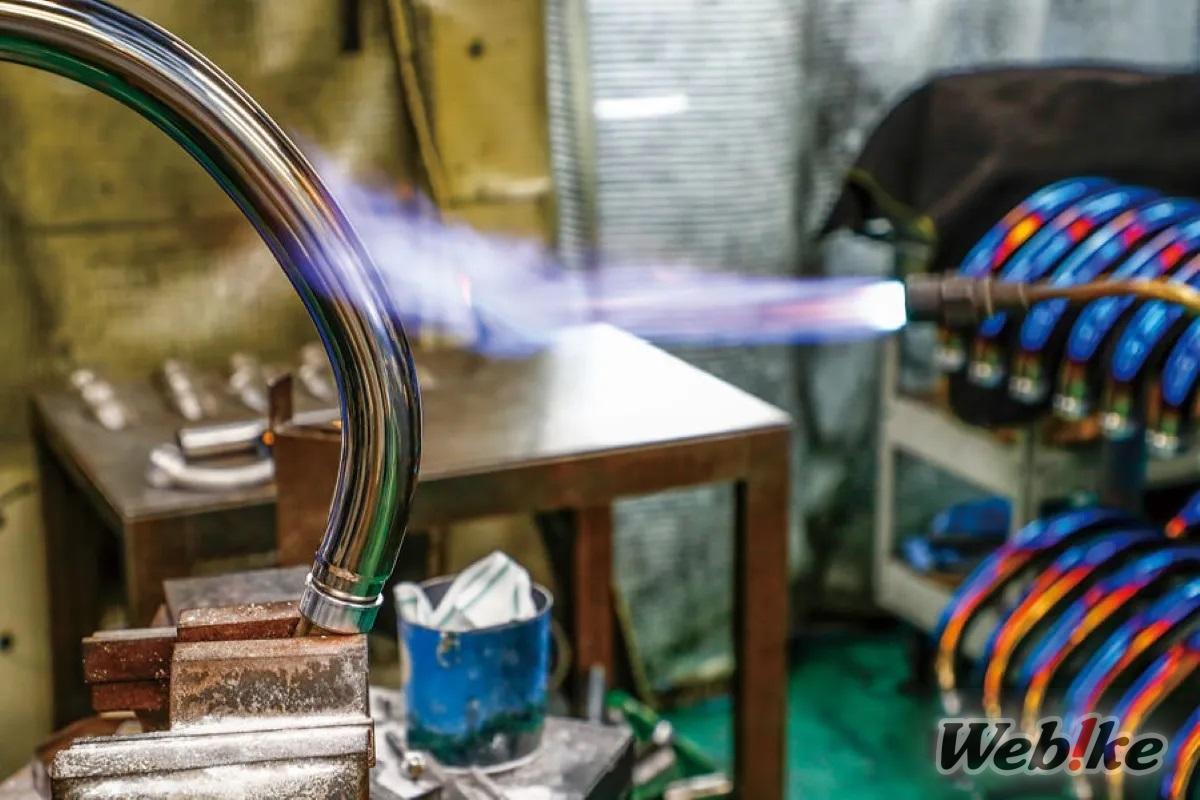
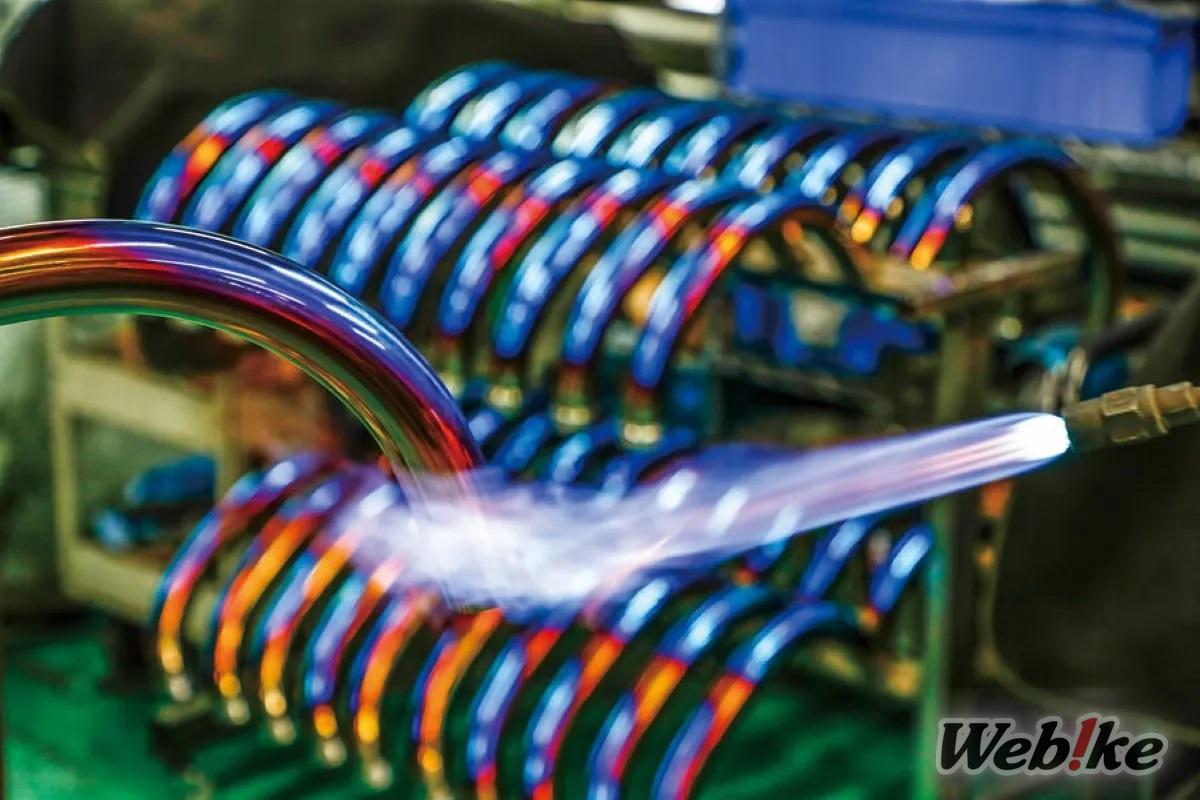
The pioneer blue heat-colored exhaust! Now also available in gold!
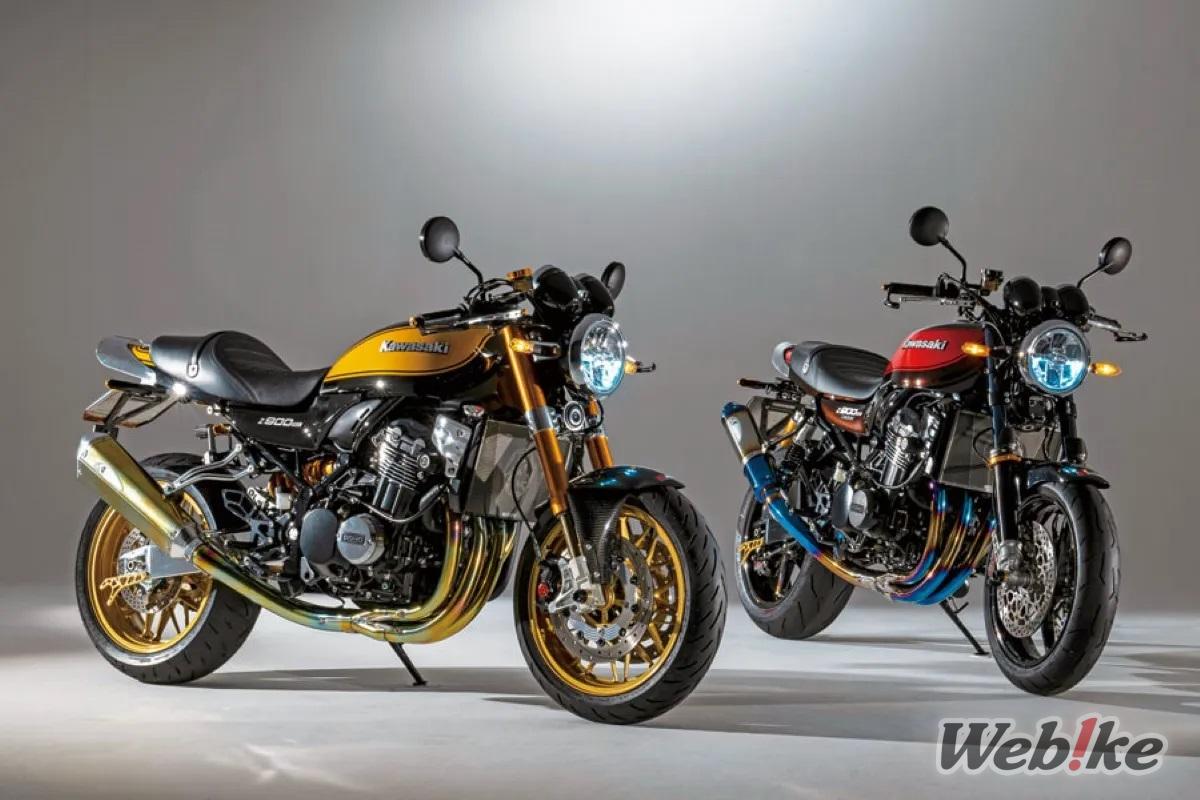
Original Source
Provided by Heritage & Legends
editor
Yo
Webike Japan's global merchandiser who is passionate about motorcycles. Born in Japan, and spent his childhood in the US. 25 years of riding experience mainly on the tarmac and motorcycle market. He loves products made in Japan and considers himself a "Japan Parts evangelist".









![[New Product] High quality press molded Big Cedar Aluminum Fuel Tank for the SR400!](http://global-fs.webike-cdn.net/@japan/magazine/wp-content/uploads/2025/07/big-cedar_sr400-tank_01-1024x768.jpg?v=1752557544)